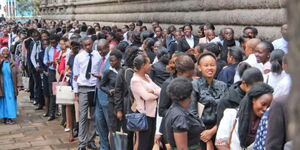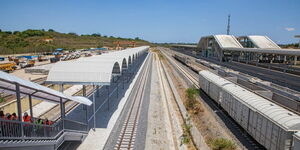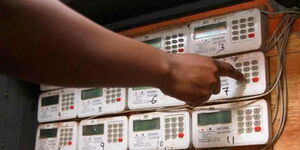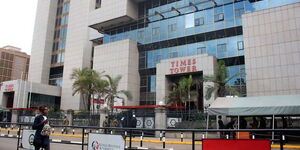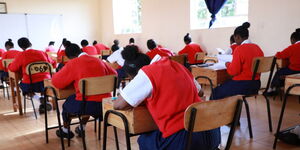Government spokesperson Cyrus Oguna has laid bare the conditions under which the government would declare a lockdown in the country.
Speaking to Anne Kiguta on K24 on Sunday, April 5, Oguna confirmed that indeed the government had an option of enforcing a lockdown but were still weighing the various scenarios to decide how to go about it.
"Of course, we have to look at our socio-economic realities. Indeed it is easy to talk about a lockdown but when you look at what it means, it requires more thinking.
"It is one option that we have on the table and is being looked at, but then you need to know that there are other considerations that are being looked into," Oguna stated.
He further informed that at the moment, the number of infections was not that bad and the not too widespread, but if it reached a point where there was an eruption of infections, then the lockdown may be triggered.
"Right now we are seeing infections not extensive in many other counties but in around seven of them. Infections are not really high in those counties. Nairobi is leading with 117 infections, but the others are still low.
He added that in the case where there were outbreaks in many other counties, they would still consider the magnitude of infections in the new region, and then the committee would make a decision on the type of lockdown to be enforced.
"We don't have to lock down everything. If the cases are negligible in the county, then there can be a targeted lockdown but there are other considerations that should be made.
"It is not a one-man decision but that made by a committee that incorporates other entities including government agencies and those outside the government, and therefore all these agencies will put their heads together and make a decision," he stated.
Oguna's statement was echoed by Nelly Yatich, an epidemiologist, who stated that the medical body had been informed that the government was doing their own modelling.
She stated that the decision of a lockdown should be based on such a thought-out model to make sure that they take into consideration the Kenyans put at risk and the numbers likely to be exposed to the disease and the general effect it would have across the country.
"10,000 is the number of infections projected by the end of April. Look at the 10,000, 80% will have mild or no infections, 20% will have severe or critical infections. Only 5%, based on data from first world countries, would need critical care.
"The decision needs to be based on whether or not our health systems will be overwhelmed by these 500 cases. In my opinion, from the numbers, we will be overwhelmed because we already have other patients there and then considering that there are more outside in the community being traced," Yatich stated.
{"preview_thumbnail":"/files/styles/video_embed_wysiwyg_preview/public/video_thumbnails/WUjBm1yTy0A.jpg?itok=7QLvrlMM","video_url":"https://youtu.be/WUjBm1yTy0A?t=388","settings":{"responsive":1,"width":"854","height":"480","autoplay":0},"settings_summary":["Embedded Video (Responsive)."]}

